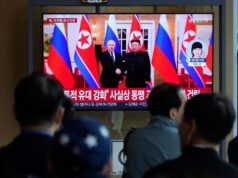By
Colonel Awadhesh Kumar, Special Forces
My article titled MAKE IN INDIA: MY DREAM INDIAN NAVY 2040 written in 2016 on the Occasion of the Navy Day had talked about the Indian Navy having a total of 12x Maritime Reconnaissance Squadrons comprising 6x Short Range MR Squadrons, 3x Medium Range MR Squadrons and 3x Long Range MR Squadrons for each of the Naval Commands and another three Squadrons, one of each type for the A& N joint Command.
It seems Maritime surveillance has finally been accorded high priority after the 2008 Mumbai terrorist attack. At that time 10 terrorists who had targeted India’s financial capital and held the city to ransom for 60 hours had come by sea from Pakistan’s port city of Karachi. One hundred and sixty-six people were killed in the siege that began on 26 November and ended on 29 November 2008.
Presently India’s Short Range MR requirements are being met by home made Dornier 228 Aircrafts. The Navy is operating 4x Dornier Squadrons namely INAS 310 at Porbandar with INS SARDAR PATEL, INAS 311 with INS DEGA at Vishakhapatnam, INAS 318 with INS UTKROSH at Port Blair and INAS 550 with INS VENDURUTHY at Kochi.
In addition to the above 4 Squadrons now the Government has sanctioned three more Squadrons of Dornier aircraft to boost coastal surveillance in a bid to provide better intelligence to prevent terrorist and other threats from the sea, an official statement said Friday.
The new squadrons are to be set up in Gujarat, Tamil Nadu and Kerala. The existing Squadrons too will be be augmented to bring the aircrafts to full Squadron Strength. A contract for 12 such additional aircrafts had already been signed in 2016 and now these will commence joining the Squadrons from this month onwards. The government had also sanctioned an increase in the manpower required for the manning of these additional aircrafts. Thus the total of 7x Short Range MR squadrons would provide the Navy with the capability of carrying out round the clock sensor based surveillance and provide targeting data in areas of operation to ward off terror and other such threats to our shore installations from sea and further strengthen Indian Navy’s efforts at coastal security of India’s vast coastline of over 7,000 kilometres.
In addition to the SRMRs, the Navy needs 4x Long Range MR Squadrons for Ocean surveillance, submarine detection and submarine hunting. For this we already have 1x Squadron of the latest in the field the P8 I Neptune. These are multi mission aircrafts with capability of Submarine hunting and ship interdiction. The Squadron INAS 312 is based with INS RAJALI at Arrakonnam in Tamil Nadu. Most probably India will be placing orders for one more Squadron of P8I Neptune with the USA. The LRMR role is also being carried out by INAS 315 based at Goa with INS HANSA. The Squadron operates upgraded IL38 Sea Dragons. It may be cost effective to raise another squadron for Long Range MR with more P8Is. However prior to that entire repair and overhauling facilities must be set up in India itself. At no stage there should be a need to send these aircrafts to any outside facilities for overhauling or repairs.
What India is sorely lacking is absence of any aircraft for Naval Medium Range Maritime Reconnaissance Role. The Navy needs four Squadrons of these multi mission aircrafts. The Indian Navy has already issued a Request For Proposal for 6x Medium Range MR aircraft. However the best bet should be to evaluate the C295 which is likely to replace the existing 60 Avros of the IAF through Make in India. Then another 48 may be manufactured to provide full MR capability to the Navy by 2030. Meanwhile the long endurance UAVs may be utilised for this medium range reconnaissance role. Presently we have INAS 342 based at Kochi with INS GARUDA, INAS 343 with INS SARDAR PATEL at Porbandar and INAS 344 at Ramanad in Tamil Nadu with INAS PARUNDU.
To get the best out of these Surveillance equipment comprising the Maritime Recce aircrafts, UAVs and Coastal Surveillance radars, now the time has also come to raise HQ Coastal Surveillance & Security Centres with each of the Naval Commands, starting with Eastern Naval Command.




